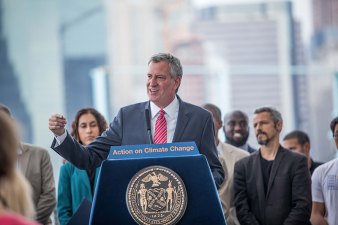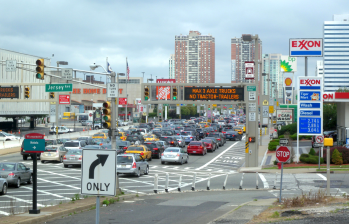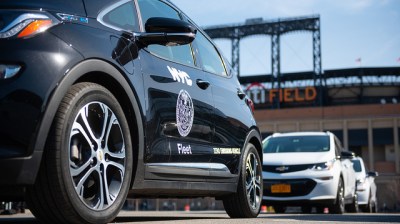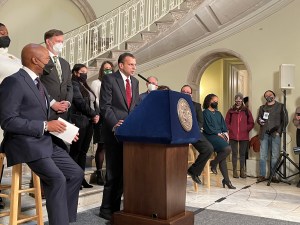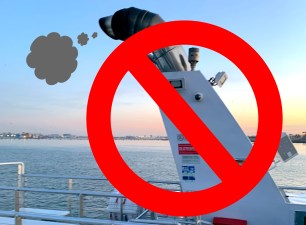NYC Needs Huge Growth in Cycling to Reach de Blasio’s Climate Goals
Mayor de Blasio wants NYC on track to reduce greenhouse gas emissions by 80 percent by 2050, but reducing transportation-related emissions won’t be possible without a significant mode shift away from private vehicles.
Transportation accounts for more than a quarter of citywide greenhouse emissions, and a whopping 92 percent of that comes from cars and trucks. Reducing the number of cars on the streets is essential to the mayor’s emissions goals, according to the “Roadmap to 80 x 50” report released this week by the Mayor’s Office of Sustainability [PDF].

The report proposes a decrease in the percentage of trips in private vehicles to 12 percent from the current 31 percent. Bikes would play an essential role in the shift, increasing from a 1 percent to 10 percent share of total trips — as would buses and trains, which today account for only eight percent of total citywide emissions.
Earlier this month, DOT released a blueprint for increasing bike mode share in its five-year strategic plan, which includes protected bike lanes and a five-borough Citi Bike system. The Office of Sustainability report also acknowledges that the city has a long way to go before cycling is an accessible transportation option in many parts of NYC.
“Despite the rapid growth in the city’s bicycle network, there are still many areas that lack sufficient bike connections,” the report says. “In addition to planned expansions, the City will emphasize an all-ages and abilities core network of protected bike lanes throughout the five boroughs, and the build-out of key connectors linking neighborhoods to transit hubs.”
The “Roadmap” report also assumes an increase in bus ridership — which the slate of reforms proposed by the NYC Bus Turnaround Campaign could help make possible.
The report highlights the public health effects of high emissions. Fine particulate matter, or PM2.5, released by vehicles causes 320 premature deaths and 870 emergency room visits each year, according to the Department of Health and Mental Hygiene.
With 90 percent of total vehicle miles traveled coming from trips not beginning or ending in the Central Business District, Upper Manhattan, the Bronx, Brooklyn, Queens, and Staten Island are bearing the brunt of those emissions. To reduce emissions, bikes and other modes must replace car trips within the city, which account for 65 percent of total car trips citywide.
The report includes an interim goal of a 40 percent greenhouse gas reduction by 2030. It also lays out a business as usual scenario, with mode share relatively unchanged. In that case, greenhouse gas emissions would decline, thanks to improving technologies, but only by 36 percent by 2030 and 40 percent by 2050, compared to 2005.
